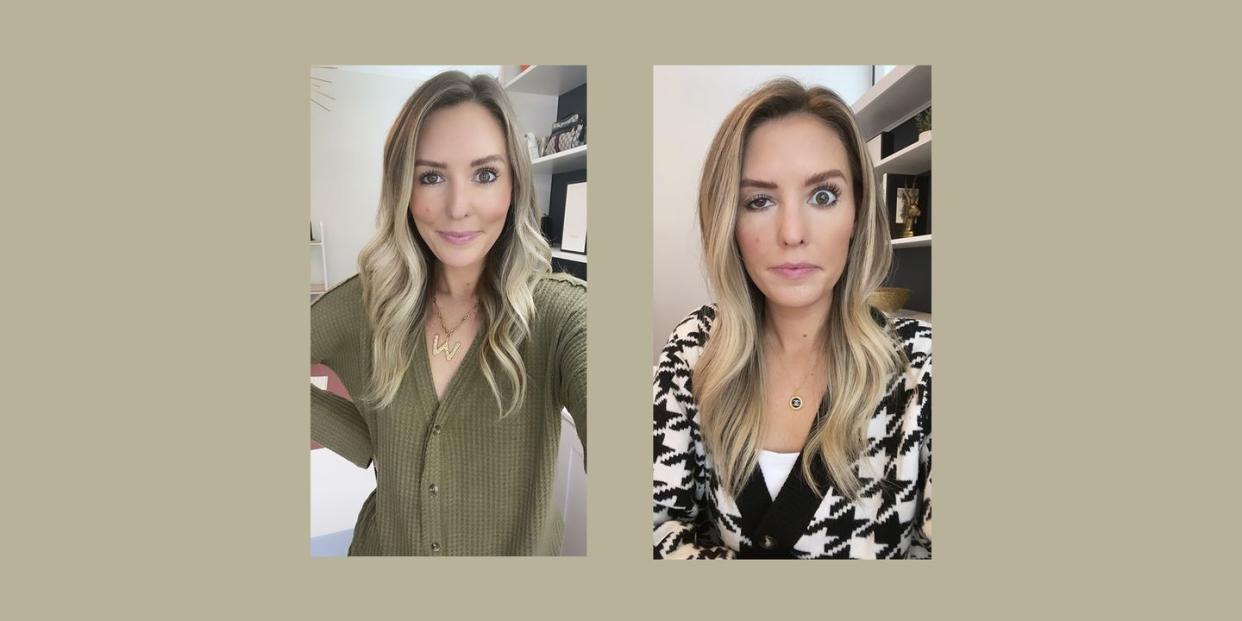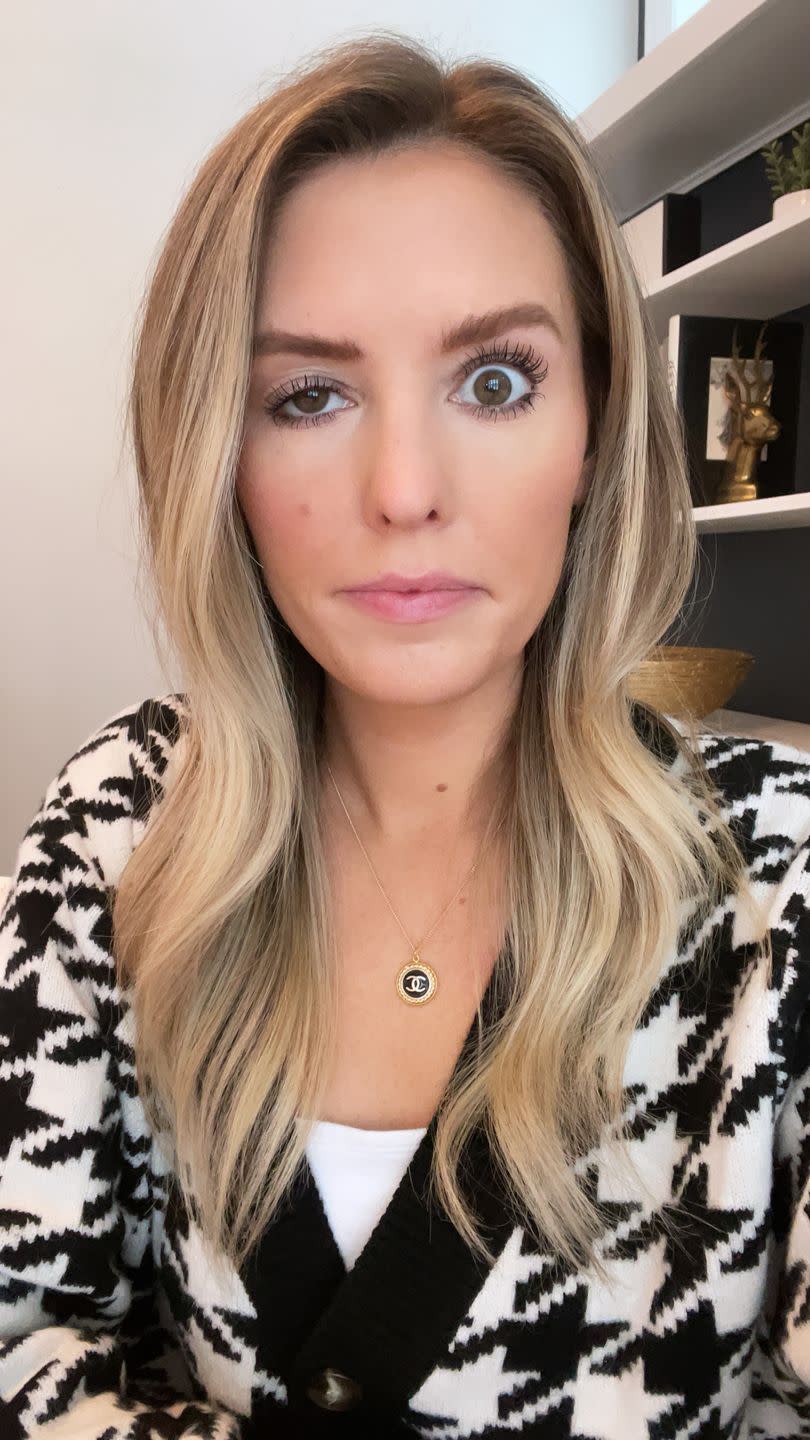This influencer had Botox and it caused her eyelid to droop

The world of influencing is sometimes criticised for conveying an image of perfection that's impossible for us mere mortals to replicate, but no one can accuse Chicago-based influencer Whitney Buha of hiding the less perfect side of her life with her followers.
Life and style blogger Whitney has opened up to her 100k-strong Instagram following about the unexpected side effect of Botox, that left her with a noticeably drooped eyelid known as a ptosis.
Whitney received her routine Botox, which she usually get every six months or so, like normal. A few days later, she noticed her left eyebrow was lower than her right so she informed her injector and was asked to go back in to see her. ("I later found out you should wait a full two weeks but she had me come back just six days later," Whitney said on her Instagram.
"She added four units of Botox right below my eyebrow which I learned later is not a good place to inject because if it goes into the wrong muscle it can cause this drooping," she went on.
"She did inject it into the wrong muscle. Four days later, I noticed my eye was drooping on this angle, down, and it got progressively worse for a week after because the Botox was filling in and settling in," she said.

Let's pause for a quick science lesson here from Professor Bernie Chang, President of The Royal College of Ophthalmologists and Consultant Ophthalmologist at Leeds Teaching Hospitals NHS Trust.
Professor Chang explained to us that there are two muscles that open each of our eyelids and circular muscles around the eyelids close them. The balance of how those muscles work result in the eyelids being open or closed.
Botox stops nerves from firing and muscles from contracting, resulting in a reduction in lines on the face. If the Botox goes further than you’d like or expect, it can weaken the muscle which opens the eyelid and result in ptosis.
Whitney was open with her followers about what had happened and tried to make light of the situation as well as discussing the difficult impact on her life.
"In all honesty this is super embarrassing and makes me extremely self-conscious about my face, but since there’s nothing I can do about it, I might as well laugh it off for now," she said.
That said, it's been a tough process for the style blogger, who's receiving professional treatment for her ptosis including eye drops, and is seeing improvement as the weeks go on.
"The first two weeks were the hardest as that's when my left eye was getting worse each day. After I passed the three-week mark, I started to see some improvement. It's been a long process of first trying to understand what exactly happened and after understanding that, trying to find a way to speed up my recovery," Whitney told Cosmopolitan UK.
"I've heard mixed things from people about my recovery - some claim the side effects can be permanent, while others reassure me that they won't be. I am hopeful that I'll make a full recovery," she said.

Ptosis caused by Botox is uncommon, but if you were ever to find yourself experiencing the issue, Professor Chang notes it's important not to panic.
"It is always temporary because [Botox] doesn’t last longer than usually three months. After the injection we expect that within 24 hours it’ll start to work and it can reach its maximum effect in five to seven days, and be able to maintain that for up to three months. But obviously, with time, the effect of [Botox] does wear off," he explained.
"Sometimes it can be quite severe… but a lot of the time we see what’s called a partial ptosis, so they’re still able to see with that eye and function with that eye. Patience is key because there isn't really an injection that we can give to reverse the effects of the Botox. Having said that, there are certain drops that can actually lift the eyelid to some extent. It's not something that we would routinely give but if the droop is so great you can’t see, a doctor might consider giving eye drops.
"Botox is a toxin, it’s a drug and therefore, unfortunately, you can get side effects... Most times, if it’s provided by a skilled practitioner it’s pretty safe, and droopy eye is an uncommon problem," he added.
Whitney also strongly recommends doing thorough research before choosing a Botox provider.
"For anyone who has concerns around this issue, I would say to first do your research before deciding on a place to go for Botox. It doesn't necessarily come down to the title of the person you're seeing, rather their experience and knowledge about the anatomy of the face," she said.
Cosmopolitan UK's current issue is out now and you can SUBSCRIBE HERE.
Like this article? Sign up to our newsletter to get more articles like this delivered straight to your inbox.
Follow Megan on Twitter
You Might Also Like


